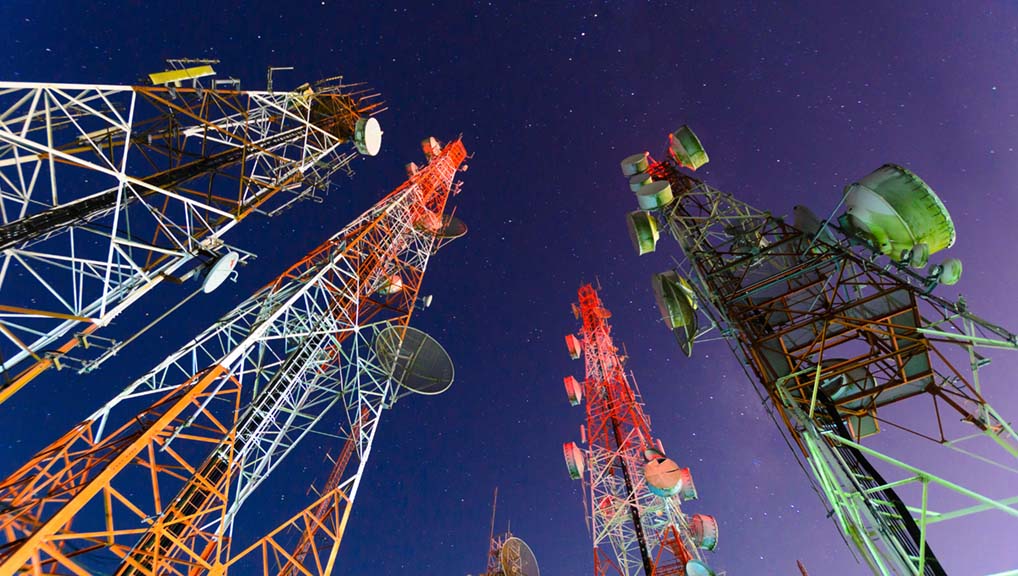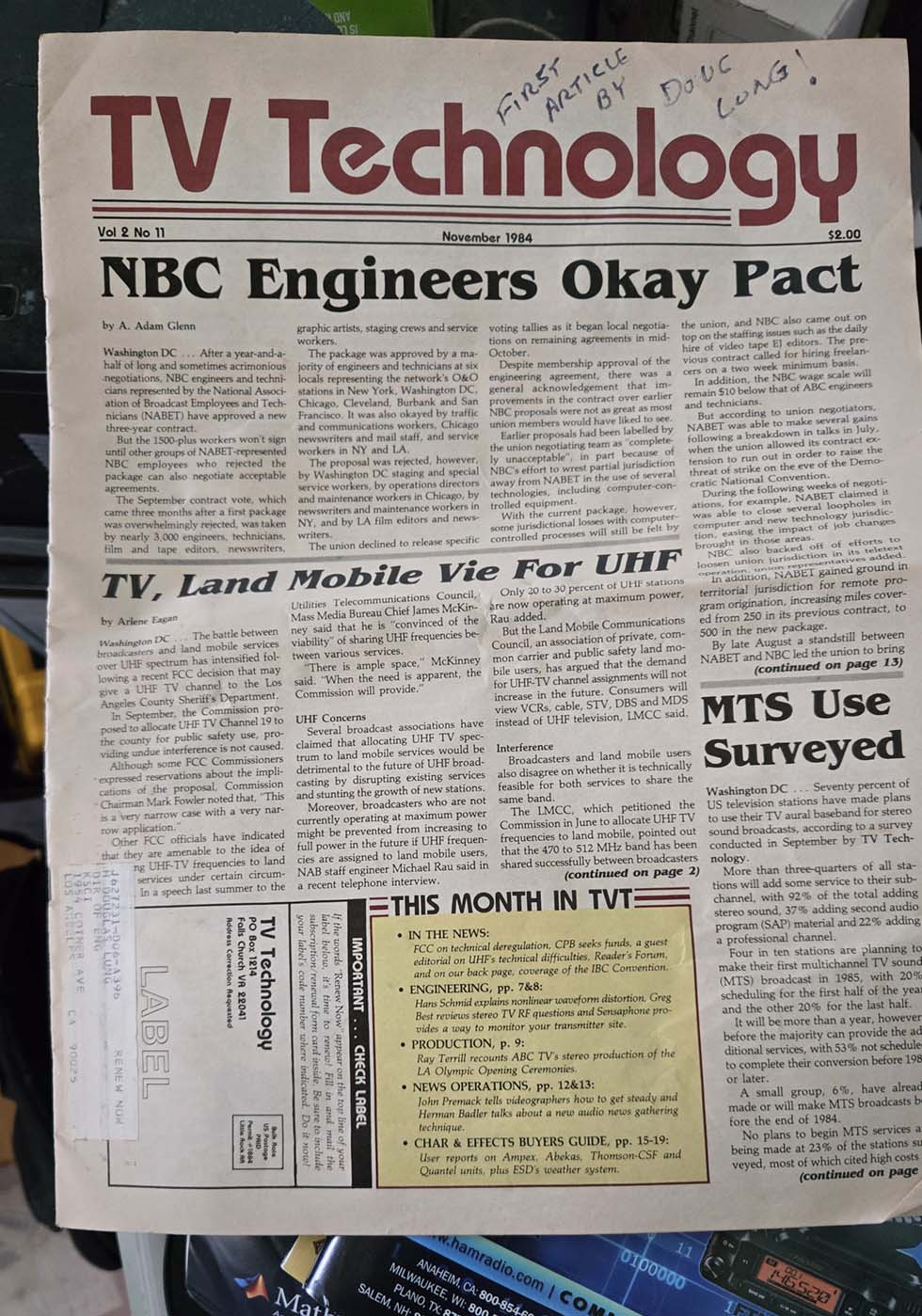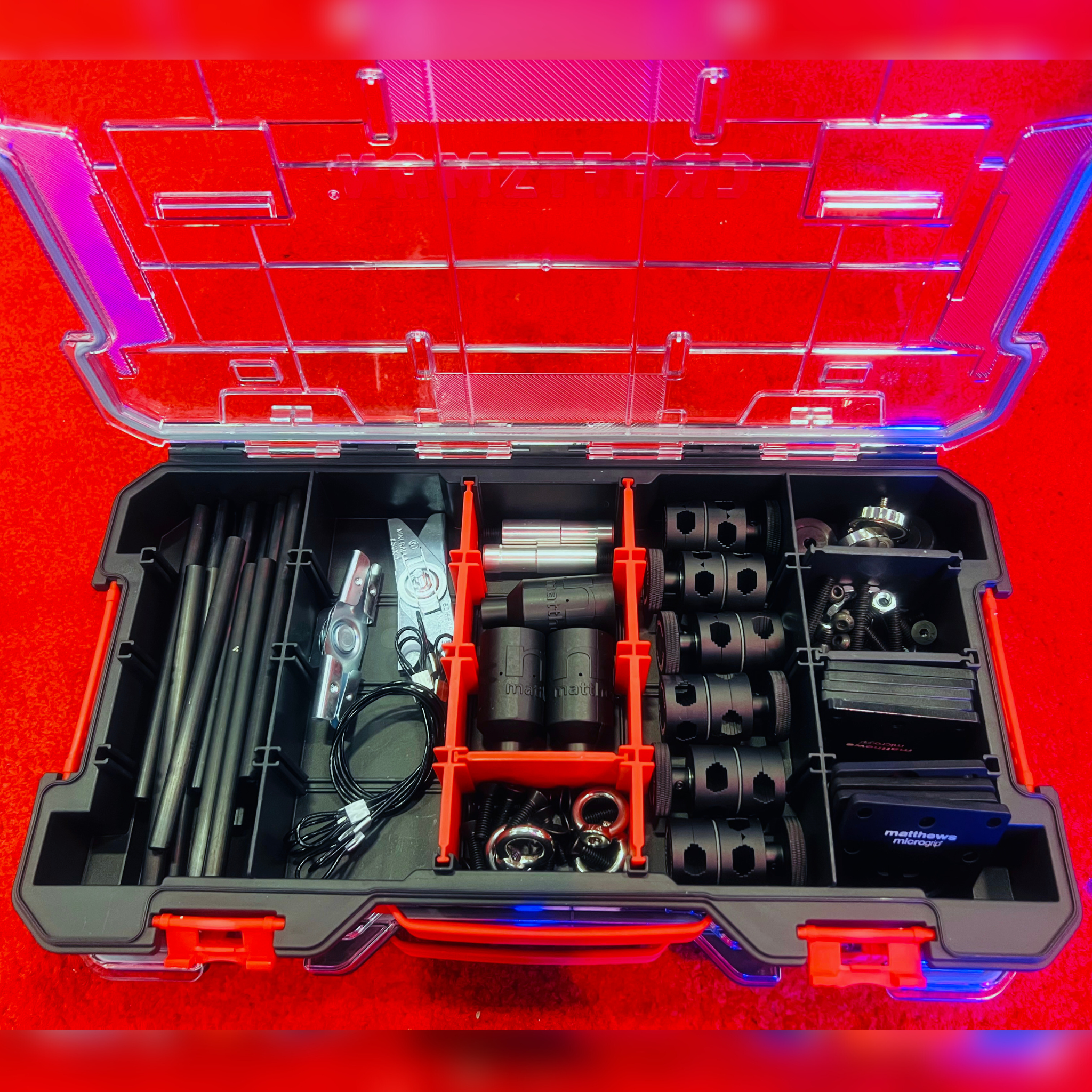Turning the Page on 40 Years of Innovation
Looking back, and ahead, at the TV industry’s technical leaps forward

While going through items I’d saved from my former apartment in Los Angeles, I came across a copy of “TV Technology” with my first article, dated November 1984. It included my user report on the Abekas 52 digital-effects unit I’d selected for KSCI, where I was working at the time. Looking through that issue, the articles and the ads showed how much broadcast technology has changed and how some things remain the same.
The photo below shows the front page of that issue. A full-resolution view, with readable text, is available here.
One thing that hasn’t changed in 40 years is the demand for spectrum. The article “TV, Land Mobile Vie for UHF” was about the Federal Communications Commission giving the Los Angeles Sheriff’s Department the use of Channel 19. As I was the chief engineer at KSCI, which was on Channel 18, I was concerned about that. As a consequence, not only was this issue the one with my first article, I was also quoted in the spectrum article: “ ‘We are very concerned about it,’ said Doug Lung, CE at KSCI TV/Channel 18 San Bernardino, CA. ‘How are they defining ‘undue’ interference?’ ”
I added that when Channel 19 was used by the Los Angeles Olympic Coordinating Committee during the 1984 Summer Olympics, I noticed intermittent herring-bone interference on a high-quality demodulator and mild interference on a Sony receiver.
Other articles in that issue that may bring back memories include the front-page article “MTS Use Surveyed,” on stations’ stereo TV plans, and a guest editorial by George E. DeVault Jr. (president and general manager of WKPT-TV and then-chairman of the NAB’s UHF Committee) titled “UHFers Fight for True Parity.”

The comments are interesting in that they point to issues with cable carriage of UHF stations and competition from out-of-market “superstations.” DeVault Jr. was also concerned that the presence of LPTV stations would limit full-power stations’ ability to improve existing service through the use of translators.
I recall that UHF TV stations didn’t get as much respect as the established VHF stations back then. Since the DTV transition, broadcasters have found UHF works better given the poor performance of indoor VHF antennas and the huge amount of noise in the VHF band coming from motors, switching power supplies, solar inverters, LED lights and other electric devices.
Greg Best’s article, “Improve Specs for MTS Xmtr,” described how to optimize analog-TV transmitter performance for stereo and how to test stereo performance. Hans Schmid’s article, “Nonlinear Waveform Distortion,” explained the different types of distortion that can occur when processing or transmitting analog video.
There were no ads for TV transmitters in that issue! However, Modulation Sciences had a two-page spread describing its TV-stereo generator. “Broadcast Engineering” had a much smaller ad with its TV-stereo generator.
Computer Revolution
Looking back at the changes over the last four decades, two things stand out as contributors to the transformation in TV broadcasting—computers, including digital processing, and connectivity.
That Abekas 52 had circuit boards filled with ICs, including the large TRW A/D converter I mentioned in the article. Comparing that chip with today’s technology, it was bigger than a 2 TB SSD or a complete Raspberry Pi Pico Zero 2W computer. The Abekas 52 and other digital video-processing gear did amazing things in 1984 but finding a defective IC, bad capacitor or bad solder joint when these units started acting weird could be difficult.
Today, there is no need to convert analog to digital and back again in production. What used to take racks of equipment, patch bays and waveform monitors to maintain can be done on a few local servers or in the cloud. A hardware user interface is still required, but it likely has a generic processor under the hood.
Reporters upload content to the cloud over the internet and editors and the production crew at the station can edit it in the cloud and ship it to master control, which increasingly is also operating in the cloud. From there it can go to the transmitter or final microwave link to the transmitter, wherever it is located.
I don’t recall seeing any digital components handling RF in transmitters or microwaves 40 years ago. Transmitter exciters had a large chassis filled with tunable inductors, variable capacitors and over a dozen potentiometers, in addition to transistors and crystal-controlled oscillators.
Fortunately, the inductors and capacitors didn’t require much if any routine adjustment, but the corrections for differential gain and phase and other distortions often had to be adjusted as the transmitter tube aged or was replaced. There were no high-power solid-state TV transmitters 40 years ago.
Today, an entire digital TV exciter can fit on a circuit board the size of a sheet of paper. With perhaps one or two one-time settings, all adjustments and corrections are done in software, many automatically. A large FPGA chip generates the waveforms and handles the corrections. There is even code available to create an ATSC 3.0 transmitter using an off-the-shelf SDR, as I wrote about in my January 2023 article, “Learning About ATSC 3.0—on the Web or on the Bench.”
Looking back at the changes over the last 40 years, two things stand out as contributors to the transformation in TV broadcasting—computers, including digital processsing, and connectivity.”
The other big change is connectivity. Forty years ago, content distribution had largely moved from terrestrial telco circuits and shipped (“bicycled”) video tapes to satellite. As fiber connections became more affordable, distribution moved from the sky back to the ground.
Today, content is increasingly delivered over the Internet, using protocols like SRT and RIST. The cost has dropped to the point where internet connectivity can replace microwave links, assuming the reduction in reliablity is acceptable. For remote sites, space is an option, using Starlink. As other low-latency, low-earth-orbit satellite constellations are launched, the cost of these connections is likely to drop. An important caveat is satellite Internet bandwidth is likely to remain limited, so this option may not be available in densely populated areas.
In 1984, I couldn’t have imagined the technology TV production and broadcasting is using today. I don’t expect to be around 40 years from now, but I expect broadcasting will change more in the next 40 years than it has in the last 40.
ATSC 3.0 allows broadcasting to merge with internet distribution platforms through virtual channels. At some point in the future, the user may not realize if the program they are watching is coming from a broadcast tower or the internet.
What’s Next?
Of course, 40 years from now, will we still be using the internet to deliver video and audio or will it look as out-of-date as AOL, CompuServe and dial-up connections do now?
One thing that hasn’t changed in 40 years is TV stations still require a transmitter with sufficient power and an antenna at sufficient height to reach viewers. Forty years from now, will broadcasters still need their own transmitter and antenna?
I’m interested in hearing what those of you who do expect to be around 40 years from now expect TV broadcasting to look like in 40 years! Email me at dlung@transmitter.com.
Get the TV Tech Newsletter
The professional video industry's #1 source for news, trends and product and tech information. Sign up below.

Doug Lung is one of America's foremost authorities on broadcast RF technology. As vice president of Broadcast Technology for NBCUniversal Local, H. Douglas Lung leads NBC and Telemundo-owned stations’ RF and transmission affairs, including microwave, radars, satellite uplinks, and FCC technical filings. Beginning his career in 1976 at KSCI in Los Angeles, Lung has nearly 50 years of experience in broadcast television engineering. Beginning in 1985, he led the engineering department for what was to become the Telemundo network and station group, assisting in the design, construction and installation of the company’s broadcast and cable facilities. Other projects include work on the launch of Hawaii’s first UHF TV station, the rollout and testing of the ATSC mobile-handheld standard, and software development related to the incentive auction TV spectrum repack. A longtime columnist for TV Technology, Doug is also a regular contributor to IEEE Broadcast Technology. He is the recipient of the 2023 NAB Television Engineering Award. He also received a Tech Leadership Award from TV Tech publisher Future plc in 2021 and is a member of the IEEE Broadcast Technology Society and the Society of Broadcast Engineers.
